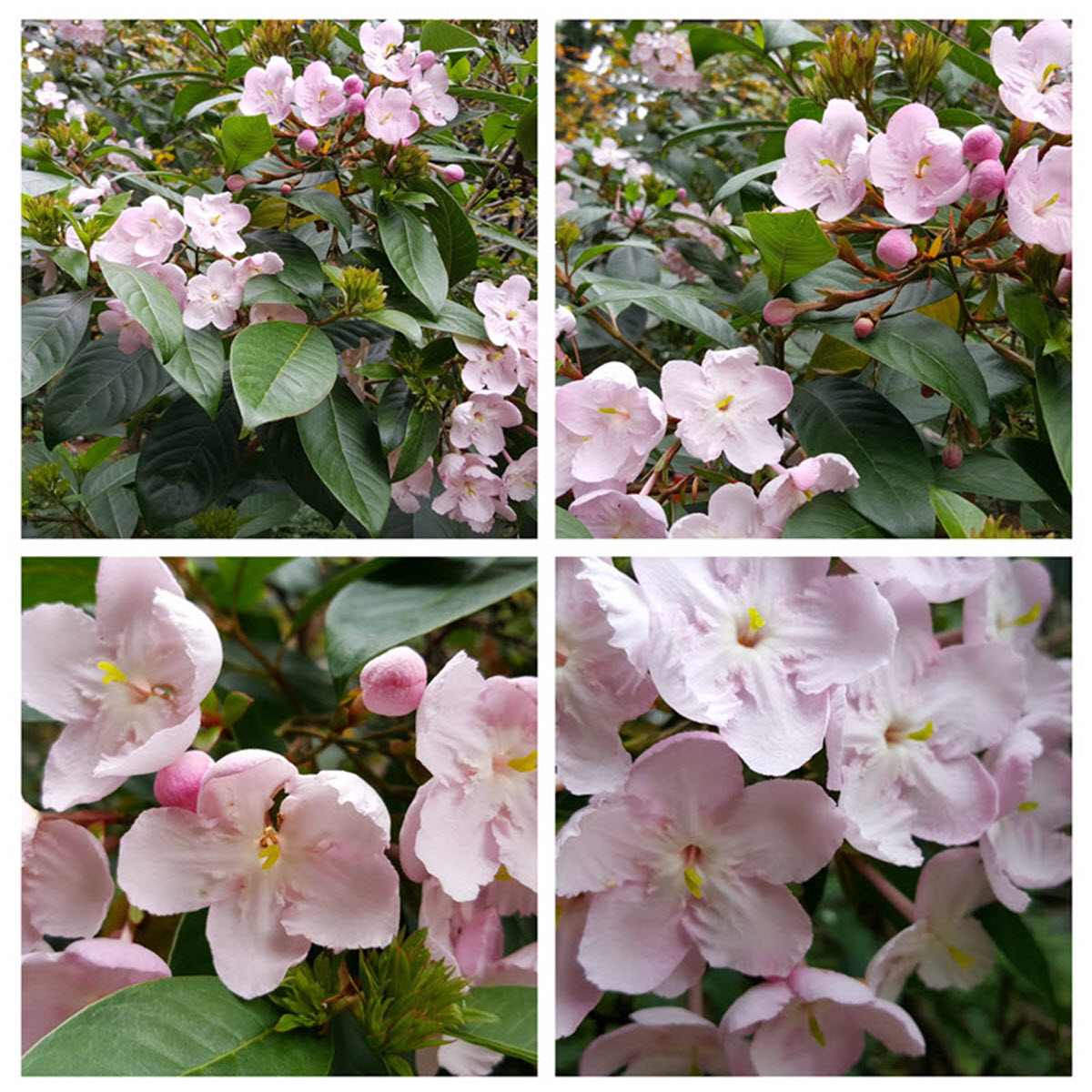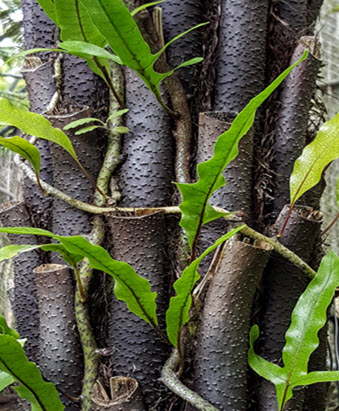 There is always something putting on a show in the Gardens and with the return of some cooler weather and the resultant show of autumn colour you might think the best is leaving us for now. But don’t despair, the Gardens has always got little surprises around each corner and there is still plenty to see!
There is always something putting on a show in the Gardens and with the return of some cooler weather and the resultant show of autumn colour you might think the best is leaving us for now. But don’t despair, the Gardens has always got little surprises around each corner and there is still plenty to see!
Meander through the many seemingly secret garden pathways and perhaps even discover that hidden treasure that you might be the first to see? Here again is a snapshot of what’s in show, the curios, the showoff’s and the bashful, that always delight the senses. Why not see if you can find them??
The Fragrant Luculia – Luculia pinceana
The wonderous luculia is a plant that truly warms the heart as the weather cools in autumn and winter. Our plants live around the top side of the pond area and they are starting their flowering period right now. You will smell them before you see them, so just let the glorious jasmine like perfume guide you to the stunning pink flowers.
This plant is in the Rubiaceae family which is the plant family of the beautifully sweet smelling, white flowering Gardenia, and would you believe the coffee plant, yes the one that gives us the coffee bean. The luculia is from Nepal and flowers throughout the cooler months almost all the way through to spring. It is a small to medium sized plant up to about 3 m in height and best suited to a frost free, morning sun or semi shade location. They love soils that are rich in compost, that are well drained but also well-watered throughout the warmer periods. If you want to grow them yourself make sure that you mulch well with a good quality compost in the spring and water well through the dry summers.
The Gardens Conservatory
The autumn can bring with it some cooler weather but in the Gardens conservatory, it is spring all year round.
So grab yourself a warm drink and escape to the always warm and colourful surrounds of this historic area of the Gardens.
The conservatory has plenty on show from cool temperate orchids of all species and forms, to the rich diversity of the tropical leaf and many rare flowering plants.
Even the native wildlife likes to make themselves at home, with wattlebirds often seen sipping nectar from the diversity of juicy flowers.
Yacon or Peruvian Ground Apple – Smallanthus sonchifolius
This incredibly unusual vegetable is a staple dietary plant of the central Andes and other parts of South America. It is essentially a type of herbaceous daisy with small yellow daisy flowers produced in late summer and autumn.
The plant produces root tubers similar in appearance to sweet potato, which are rich in specific sugars that are said to be mostly indigestible so therefore they do not add to your sugar intake.
A relatively easy plant to grow, with the tubers planted out when the soils are warm in spring. The plants can reach up to two meters in height and produce prolific amounts of tubers that are harvested in the winter months.
Our plants are in the Tasmanian Community Food Garden near the eastern Eardley Wilmott wall.
Another Gardens curiosity is the Kangaroo Fern – Microsorum pustulatum
The amazing native kangaroo fern is a natural climber, normally clinging to branches high up in the tree canopies of the Tasmanian wet forests. Usually an epiphyte, they live on trees but they are not parasites. This one is climbing up a native tree fern following the old alignment of the ferns leaf bases, a curious sight. See if you can find it in the Tasmanian Fern House near the Tasmanian Native Plant section of the Gardens.
The stunning lindera, Lindera obtusiloba is another plant to look for in the autumn, arguably one of the best autumn colour changes of any deciduous plant. It can be seen on the western side of the pond area. Still a few weeks left of autumn colour with the best places to see the display on the deciduous lawn, the pond area, and the Chinese and Japanese gardens.






